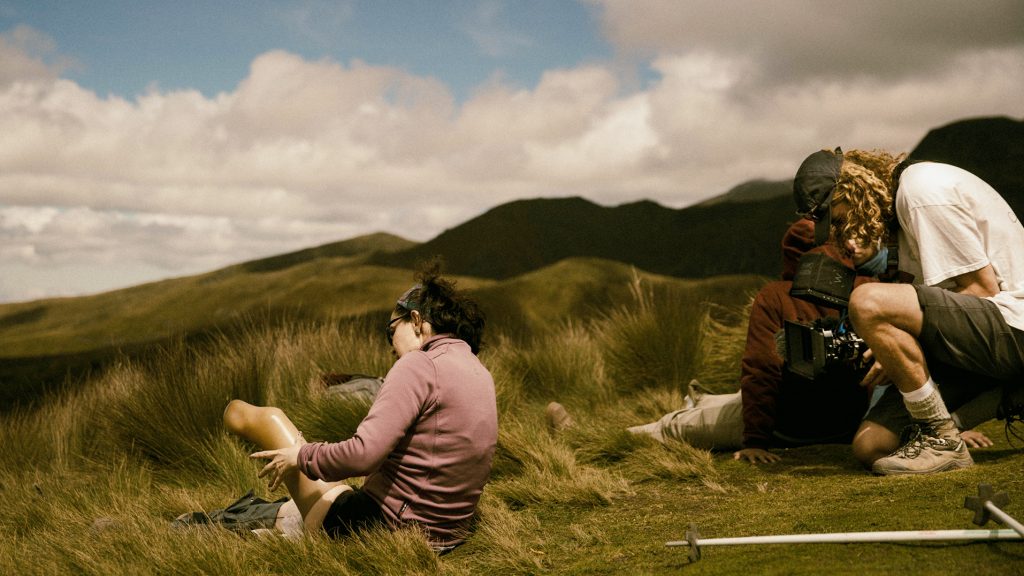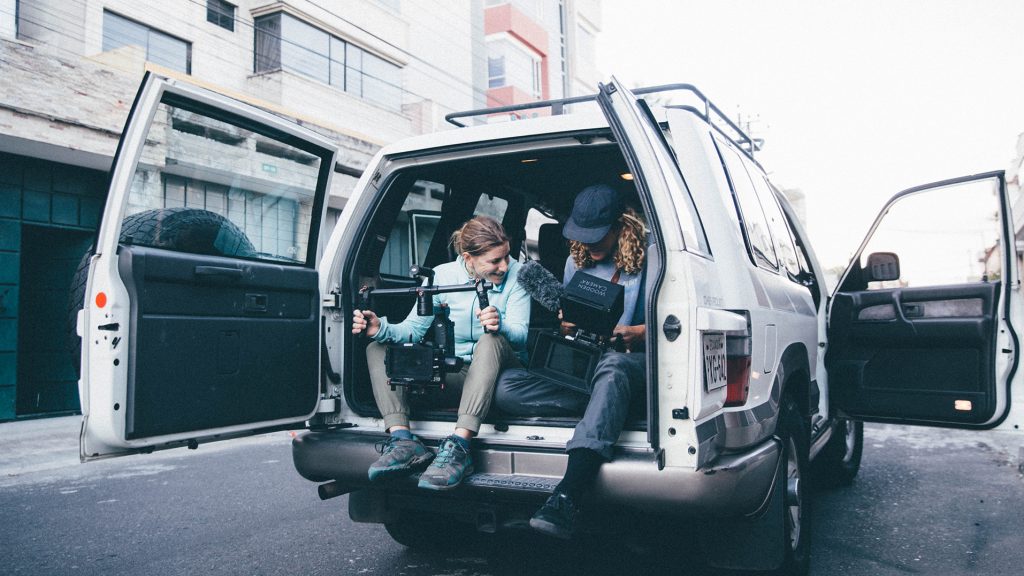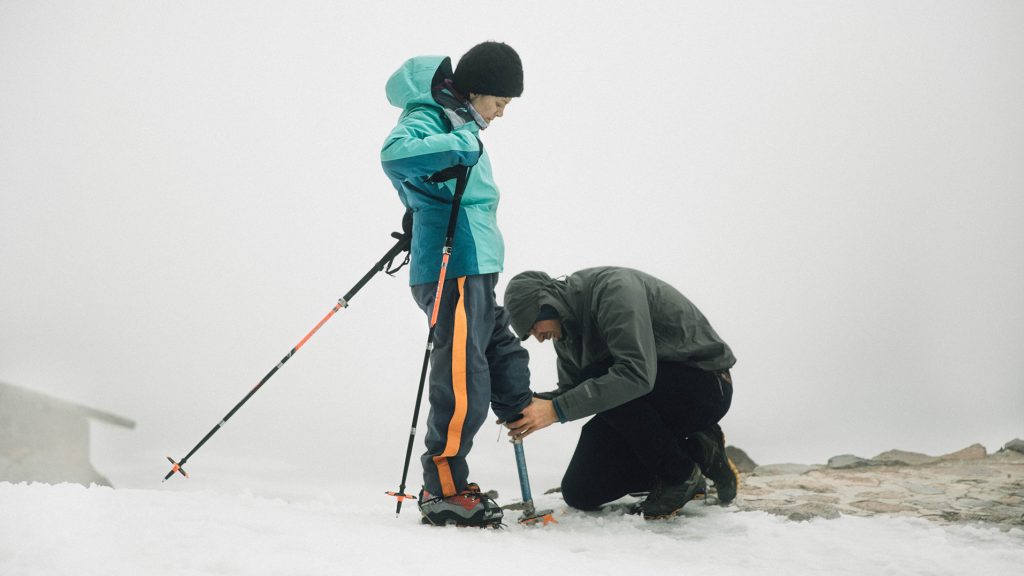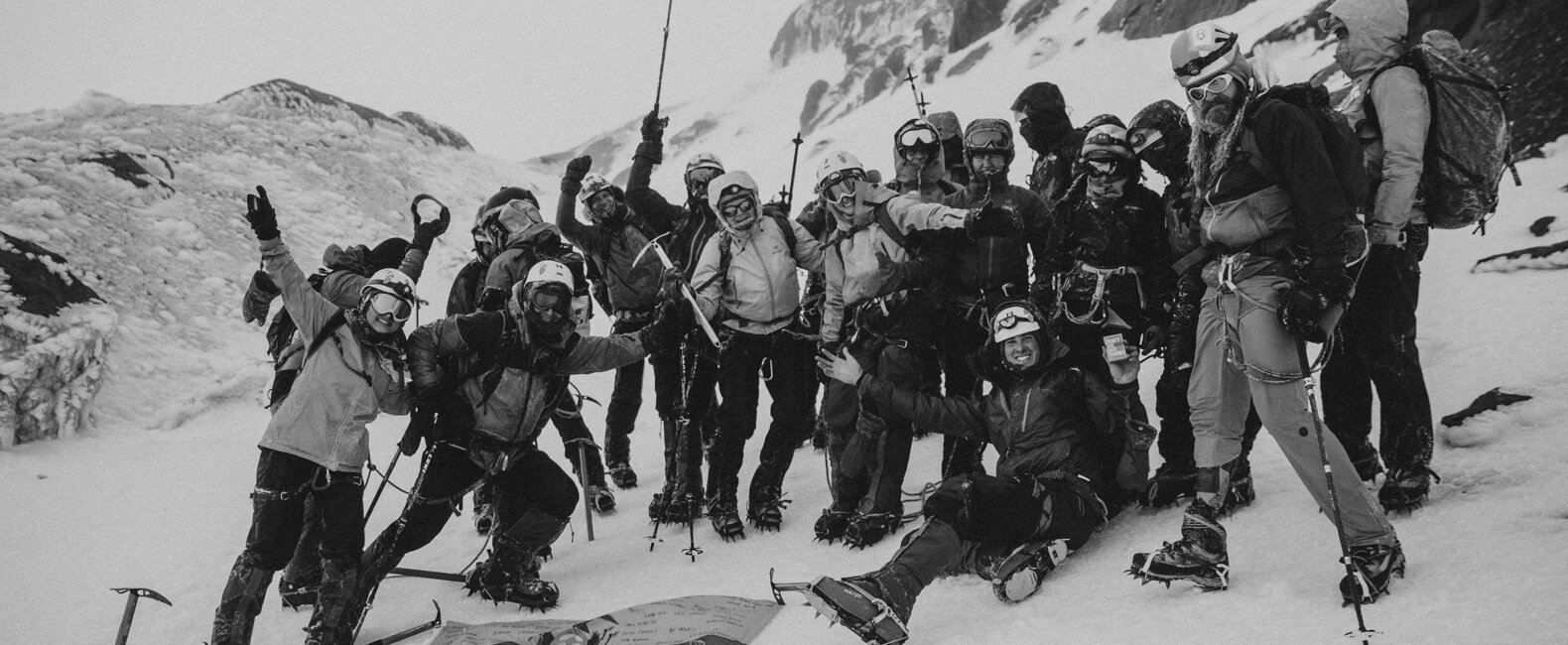Defining the role of a producer is like trying to hit a moving target. One day they may be drumming up funding and the next day they may be booking flights for their team. Or, in Lindsey Hagen’s case, doling out ginseng tablets to help prevent altitude sickness and climbing a 19,000-foot volcano in Ecuador. As the executive producer on La Cumbre, she played a decidedly hands-on role from start to finish. In fact, she formulated the film’s concept herself on a 3-month hike across New Zealand. Her goal: to bring a group of adaptive athletes to a region where “adaptive athlete” wasn’t even in the vernacular.
“My hope was to skew the perception of disability in that region by giving them a new skillset and showing them excelling at a sport that maybe their peers thought they could never do, or shouldn’t be doing,” Lindsey told us.
All this is to say, La Cumbre is 110% Lindsey’s passion project. And, because of that, she has a unique perspective on what it took to pull it off from a production standpoint (initial funding, finding distribution) and a creative standpoint (casting, storytelling). Watch the film below, read our conversation, and listen to the spot-on soundtrack from Musicbed artists Max LL, Aeuria, and A.Taylor.
Musicbed: Is your background in production?
Lindsey Hagen: I’ve been with Stept for two years now as their executive producer, but I have a background in PR and sales and marketing in print media. I worked for Free Spirit Snowboard Magazine and also for a non-profit called Paradox Sports, working with adaptive athletes.
So, how did you transition into being a producer?
After my gig with the magazine, I took some time off and did a through-hike in New Zealand. While I was walking that trail for three months, I did a lot of thinking about where I wanted to focus my time and energy. I had a journal with me, so every day I was writing a list of the things that made me happy, what made me feel purposeful and empowered. I decided I wanted to spend my time sharing meaningful stories, using media to empower people and give them a voice. So, I reached out to Stept, told them I had a background in sales, marketing, and media, and they trained me to take over the executive producer role.
I started with selling, primarily focusing on branded content and doing a lot of direct-to-brand sales. That involves everything from coming up with the creative to collaborating with our vice presidents and directors we work with to present compelling, authentic stories. I’m that middle man between the brand and the creative — whether that’s the director or the talent themselves.
Is that how you started the conversation with ROMP for La Cumbre?
Actually, La Cumbre was a passion project for me in every sense. This was an idea that I actually came up with on that through hike and wrote down in that journal I referenced. I wanted to bring a team of adaptive athletes from the U.S. who’ve gotten amazing opportunities and bring them to a region where people haven’t had the same opportunities. In this case, it was Ecuador, where they are seeing huge public health issues, especially in the realm of amputation. My hope was to skew the perception of disability in that region by giving them a new skillset and showing them excelling at a sport that maybe their peers thought they could never do, or shouldn’t be doing.
I reached out to an old friend, Chad Jukes, a leg amputee who I worked with before I got into production. He actually taught me how to ice climb. He told me that he’d partnered with the Range of Motion Project, also known as ROMP, and they were sending a team of amputees to summit Cayambe (Ecuador’s third highest peak at 19,000 feet). From there, I reached out to ROMP, and told them I wanted to document the journey. We started doing interviews with a team of amputees they were working with down in Ecuador.

How many people did you interview?
I believe we had four different characters in mind at the time.
Why did you decide on Kathy Pico?
You know, I really like telling stories about real people. They don’t have to have any special accolades. I think the stories that do best are about regular people facing everyday challenges that the general public can empathize with. We can all see our own journey through the lens of this protagonist. Most of us can’t empathize with Kathy because we haven’t had an amputation ourselves, but we can empathize and understand that when you go through difficult circumstances you have two choices: come out stronger or fail.
In Kathy’s case, she came out stronger after she had her leg amputated and realized she loved the mountains and this expedition-style mountaineering. It opened a whole new world of possibility for her. Also, I’m a female producer, we have a female director, and Kathy’s story just stuck out the most. There may have been a little female-to-female understanding. She’s just very strong and has a very eloquent way of describing her situation.
Is there a difference between a documentary subject and a documentary character?
I guess I’ve been unintentionally saying ‘character’, because I don’t think of them as characters. I don’t feel removed from the story, like looking in on something from the outside. When you’re there working with these people, it’s extremely immersive. Your hope is that you can make an impact on their life as well. There are very vulnerable moments when you’re in someone’s house and they’re telling you their deepest, darkest secrets in the lowest times of their lives. They’re depending on you to share that accurately. With a large audience, that could potentially put them under scrutiny and criticism; you become an advocate for them.

Did it help coming from a PR background?
Absolutely. Even with the clients I work with, my interpersonal relationships are the most important thing. First and foremost, is comes down to your own character and holding yourself accountable for your ethics and values, where you draw the line. I would never want to be in a situation where I’m making a film that’s putting a subject in a position that makes them uncomfortable.
Is that why you opted to be on-location for the shoot?
For me, to be able to pitch creative I’m passionate about, get it funded, and then see it through from beginning to end, it’s really important for me to be out in the field. You have these relationships with the characters and when you take their story out in the public sphere, it’s so important to portray it accurately. By being there, I can have more control of how the story is being depicted.
With this story, we were really lucky, because the creative came internally. I came up with it. So, when I’m pitching it to brands, you already have that locked in. They’re not going to alter the creative that much. However, if it’s a situation where the brand is involved with the creative, and they have a clear vision of what they want, what you originally had written out may not apply once you get to the location. You need to be there to assess the environment and know when to pivot.
Did you have to pivot when the team didn’t summit Cayambe?

No, not really. I think what it did was actually bring us a lot more depth. Honestly, sometimes it’s frustrating to make films that are objective-based. Coming from an action-sports background, there’s a high likelihood of falling into that category. It almost robs you of the deeper story and the deeper meaning, because we have these human stories that are much more profound than just an objective on a mountain. I think by not being able to fill our objective, we were actually able to tap into that story.
There was something that Dana Romanoff, the director on our film said. I remember we were filming and we were watching this story come together really beautifully. There was no storyboarding, there was no script, and I remember her looking into the monitor and saying, “I can see the film. I see our film.” It was cool for me to see that click. We saw the film coming together before our eyes. It just goes to show that you can only control so much. You can try to dot your i’s and cross your t’s, but things are going to change and that’s inevitable.
How about getting funding? Did that go to plan?
It was a battle to get this project off the ground and get it funded in time. There was a strict timeline, a tight weather window, and I had two months to get it off the ground with seven brands on board who were all wanting different marketing assets. The brands were so passionate about the project and they were scraping together whatever budget they had left because it was so late in the game. So, as a producer, you’re trying to meet the brands’ needs and they need to hit their marketing goals, but then you’re trying to get the finances covered so you can make sure your team gets food and water while they’re on the ground. But, we were able to pull in all of the funds, and pull it off with a super low-budget production.
When we got back, we didn’t have a production partner or a distribution partner. In an ideal world, we have a distribution partner baked in from the beginning. It’s one thing to make a film, it’s another thing if no one sees it. So, I presented it to REI, and they were very excited about the story. They liked Kathy’s character. They actually picked it up after production and opted to host the content on all of their platforms. REI ended up being the host platform for the story, but it that actually came after the production.

Did that process add pressure?
Absolutely. It applied a huge amount of pressure. When you have someone’s story in your hands, they depend on you. It’s a lot of weight on your shoulders. I was so fortunate that the brands that supported this film decided to step up to the plate and saw the value in this story. I had to convince myself every morning that this film was worth fighting for, to still push for the funds, and not give up hope.
Why do you think your pitch to REI was successful?
This is a big reason why I love being a producer. I’m dealing with real stories that I’m extremely passionate about and I wear my heart on my sleeve. For me, when I’m pitching brands, it’s not so much about the pitch, it’s more about telling them why I’m excited about the project. I think they can hear that through the phone and they can see it on my face.
What did it feel like for you to take this idea from journal entry to finished film?
It was pretty surreal. As soon as I got back from New Zealand after my hike, I threw myself into production having never produced anything in my life. There I was, a year later, making my passion project and promoting a message I felt really strongly about, working with people that inspire me on a daily basis. It was so fulfilling. I had the most amazing team backing me, the support of Stept Studios, all of the brands that came on board. We were able to premiere the film at Adventure Film Festival in Boulder, Colorado, my hometown. The whole process was really beautiful.


















































































